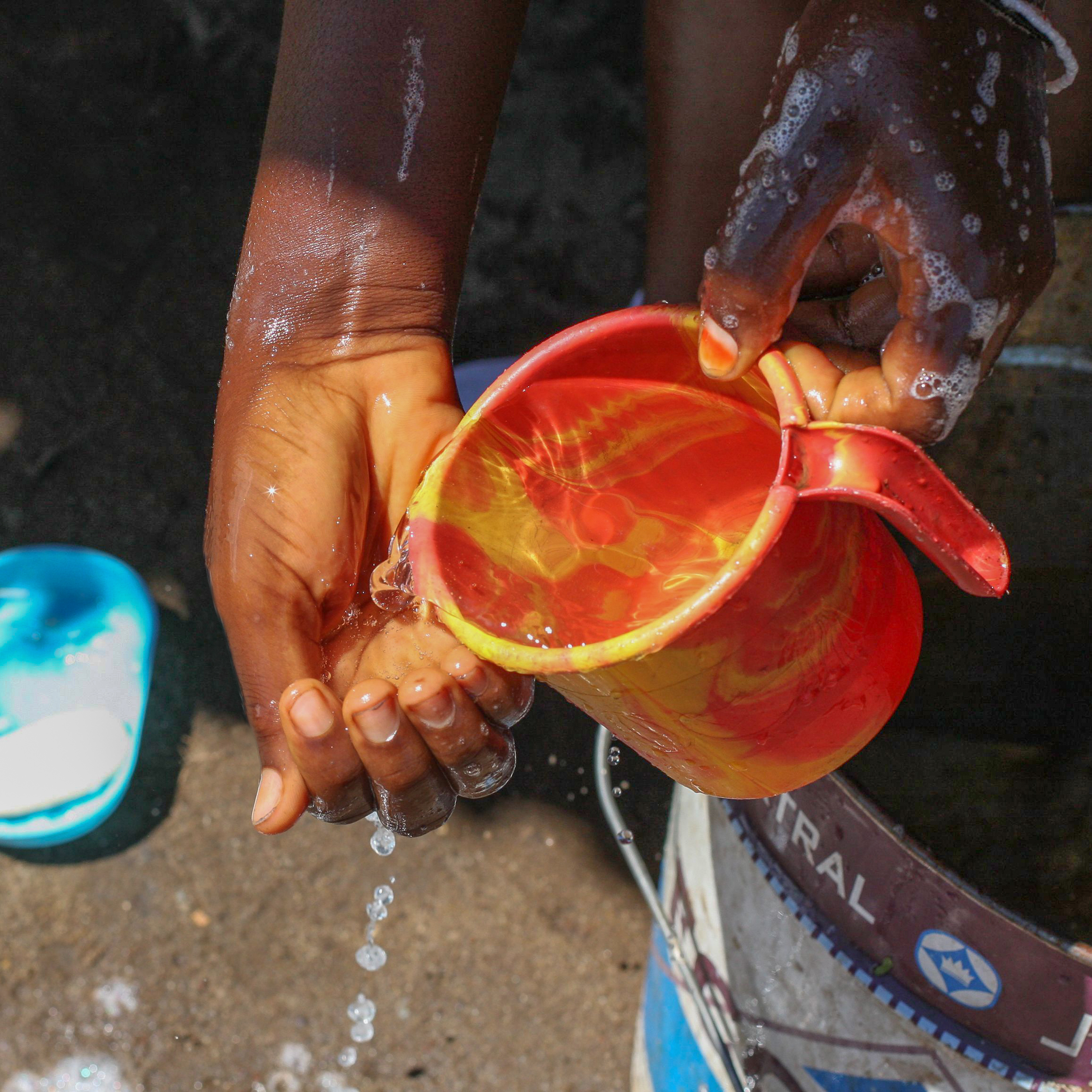“This is a joint blog post, written on behalf of the CSU2030 core team as well as partners engaged in the Sustainable Health Financing Accelerator.”
The COVID-19 pandemic swept the world, reshaping the global health landscape and triggering an economic crisis deeper than anything seen since the Great Depression. The pandemic has clearly shown the extent to which health and economic security are interdependent.
While health security – reducing the vulnerability of societies to pandemics such as COVID-19 – is a separate objective, it is inseparable from efforts to move towards universal health coverage (UHC). Neither UHC nor health security can be achieved without the establishment of health commons, produced by strong, resilient healthcare systems. The crisis has clearly highlighted this interdependence.
The immediate and global response to COVID-19 must imperatively reinforce the universal systems that contribute to both health security and CSU. Doing so means re-examining how national resources and development aid, currently channeled into the health sector, should be used to protect against future health emergencies and maintain coverage of essential services.
COVID-19 will have an impact on public health financing in countries and on the priorities of official development assistance for health.
The COVID-19 pandemic has triggered a huge economic shock that spares no country. The International Monetary Fund predicts that more than 170 countries will experience negative per capita income growth in 2020, a sharp reversal from the forecasts of just a few months ago, when 160 countries were projected to grow. According to estimates, the economic recession caused by the COVID-19 epidemic could push 71 million people into extreme poverty by 2020, with sub-Saharan Africa and South Asia the hardest hit regions. While the intensity and duration of the health crisis are uncertain, governments are rushing to mobilize and allocate funds for emergency responses to COVID-19 in order to maintain macroeconomic stability, while mitigating shocks to vulnerable households, businesses and essential services. Over the past few months, more than 90 nations have requested IMF support, and more than 100 countries have benefited from World Bank assistance to help them respond to COVID-19.
The impact of the economic shock on healthcare spending could be considerable. In the short term, healthcare spending may increase as countries step up their response to the crisis. In the medium term, we can expect tax revenues to fall and public debt obligations to rise, reducing the fiscal leeway available for public spending. Countries whose social protection and health insurance systems depend on social security contributions will be hard hit by rising unemployment and falling wages. An initial analysis using IMF and World Bank Group projections of the economic impact for certain Asian countries indicates that without adaptation measures and/or a redefinition of priorities, public spending on health will decline. Previous crises have also taught us that women and children living in extreme poverty are disproportionately affected by economic fragility, and are most at risk from the negative health consequences that follow.
The financial pressure on the healthcare sector in the medium to long term will come from the tension between declining revenues and the necessary increase in expenditure linked to the need to invest more in essential public health functions, and from the delay or forgoing of essential care for conditions other than COVID-19. Policy-makers, in their efforts to adapt and cope with these pressures, must guard against adopting approaches that offer at best only limited additional resources at the cost of making the system more vulnerable to shocks, for example policies that link funding and coverage to the employment situation.
While the financial constraints on countries are obvious, the impact of COVID-19 on development aid remains to be seen. High-income countries have been hard hit, and tighter domestic budget constraints could lead to some contraction in development aid, just when low- and middle-income countries need support the most. Faced with such a dilemma, it is essential that the international financial institutions and technical partners who are in a position to provide the required assistance receive the widest possible support. For the health sector, COVID-19 makes it all the more necessary for countries to align their service delivery models, improve their governance and health financing arrangements, and prioritize between and within individual and population-based services in order to make the best use of available resources. Health organizations must therefore focus on supporting countries both in the immediate response phase and in measures to strengthen health systems in the medium term, in order to consolidate the foundations of health security and CSU.
In recent years, the issue of transitions away from donor support has featured prominently in debates on health financing in many low- and middle-income countries. Many of these transitions are correlated with countries’ gross national income (GNI) per capita thresholds. 1] Given the expected impact of COVID-19 on economic growth and fiscal capacity, the domestic resources that are expected to compensate for reduced donor funding will come under considerable pressure.
However, the response to COVID-19 also offers an important opportunity to better manage the transition phase and the interface between domestic and external funding. Partners must share a common commitment to supporting systems to make them more efficient and coherent, with a view to improving health security and ensuring more effective coverage of essential services. Past approaches have had beneficial effects in certain specific areas, but have also highlighted inefficiencies that need to be corrected, in order to strengthen sustainability and prepare for transitions. Future approaches should seek to remedy the lack of attention paid to the health commons, including public health operations, as well as the excessive fragmentation of financing circuits for essential systems and services, and the multiplication of chains of responsibility.
Pandemic preparedness and response must become “step zero” in the CSU program.
The pandemic resounds like a powerful signal, brutally reminding the world that epidemic preparedness and response is a shared health asset. Ill-prepared and fragile healthcare systems are a threat to global economic security. As the world emerges from the immediate crisis response, countries and development partners need to reconsider their funding priorities. They need to place essential public health operations, such as surveillance systems, water and sanitation, and health promotion, at the forefront of health system development strategies. Despite repeated warnings and their relative affordability, commons for health functions such as those mentioned above suffer from a cruel lack of investment. The whole planet can now see in real time the consequences of this lack of investment. Countries are currently using COVID-19 response funds to fill gaps in surveillance, risk communication systems and available additional resources; but if these investments are to be sustained over the long term, they need to be made thoughtfully, ensuring that they are aligned with other health systems strengthening initiatives.
Domestic and external resources should be used more effectively to maintain and extend coverage of essential services.
The global economic contraction triggered by the pandemic will require greater efficiency in the use of resources, whether from national sources or donors. In addition to the direct impact of COVID-19, the pandemic will have a significant indirect impact on coverage by essential services (see examples: a b, c, d, e, f). Health systems must not only become resilient in the face of future epidemics, but also ensure that hard-won gains in coverage by essential health services are protected and extended.
For countries and their partners, this means working with civil society to raise awareness of the need for adequate, collective funding for healthcare, giving priority to the health commons. As countries scramble to find solutions to revenue shortfalls, it may be time to put forward or revisit the case for health-friendly taxes and reduced fossil fuel subsidies. These political actions could offer both fiscal space and health benefits. In the interests of sustainability, we also need to consider strengthening public finance management systems and improving strategic purchasing, so that coverage can be extended and resources better utilized.
At the sectoral level, ministries of health and related bodies (e.g. health and social action funds) must strive to make the best possible use of the public resources available to protect and develop essential services, and report transparently on the results achieved. This objective also implies improving governance and paying particular attention to equity and the marginalized and neglected. At present, the excessive fragmentation of funding arrangements prevents the building of adaptable, well-prepared healthcare systems capable of delivering cost-effective services to the population and qualitative, patient-centered individual services.
In conclusion
Times of crisis offer a unique opportunity to tackle persistent obstacles that have long remained out of reach. Historically speaking, the collective investments we benefit from today were often born of a desire to react to difficult times, but it would be a mistake to assume that logic and technological solutions alone are sufficient. Political will, advocacy by civil society groups and private enterprise, and support from international partners all play a vital role. The pandemic represents a turning point, a tipping point towards different approaches in the healthcare sector, both in terms of what to fund, and in terms of innovative instruments and approaches inspired by the above reflections and priorities.
The recently launched ACT (Access to COVID-19 Tools) Accelerator, and the successful US$160 billion replenishment of GAVI, Global Fund, Global Finance Facility and World Bank resources to finance emergency responses to COVID-19, provide an opportunity to help countries put their health systems on a firmer footing, both for the health commons and for greater access to essential health services without financial constraints (or CSU). The CSU2030 constituency advocacy, joint commitments and enhanced collaboration enshrined in the Global Action Plan for Health and Wellbeing for All and its Sustainable Financing Accelerator should help drive this agenda forward.
[1] GAVI bases its eligibility criteria on average GNI per capita over the last three years, with a few adjustments, while the Global Fund establishes eligibility according to both income level and disease burden. For the World Bank, the transition to the International Bank for Reconstruction and Development (IBRD) after leaving the International Development Association (IDA) is based on income levels.
Specific contributors are: Maria Skarphedinsdottir CSU2030 Core Team, Santiago Cornejo GAVI, the Vaccine Alliance, Michael Borowitz The Global Fund to Fight AIDS, Tuberculosis and Malaria, Joe Kutzin World Health Organization, Health Systems Governance and Financing Department, Toomas Palu World Bank Group, Health, Nutrition and Population, Ellen Van de Poel The Global Financing Facility (GFF), Susan Sparkes World Health Organization, Health Systems Governance and Financing Department.
Photo credit: WHO/Fid Thompson


